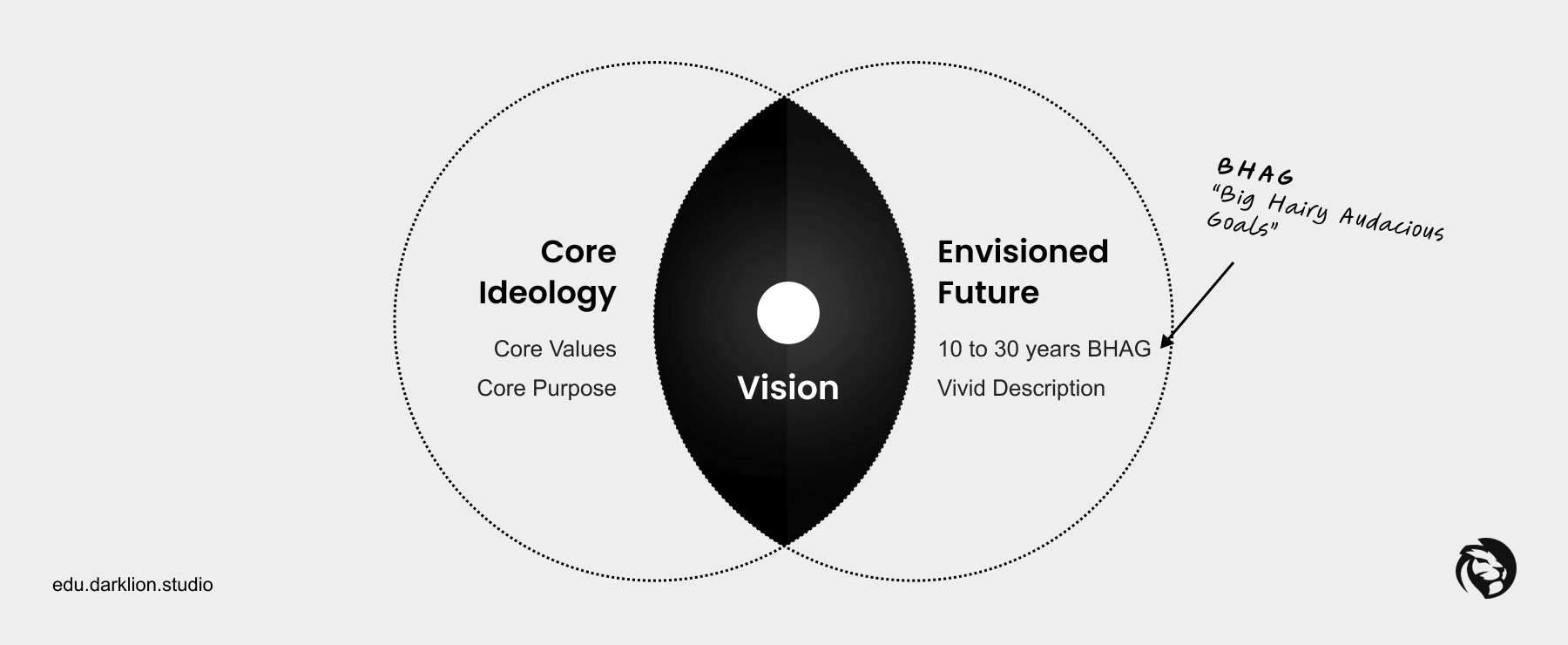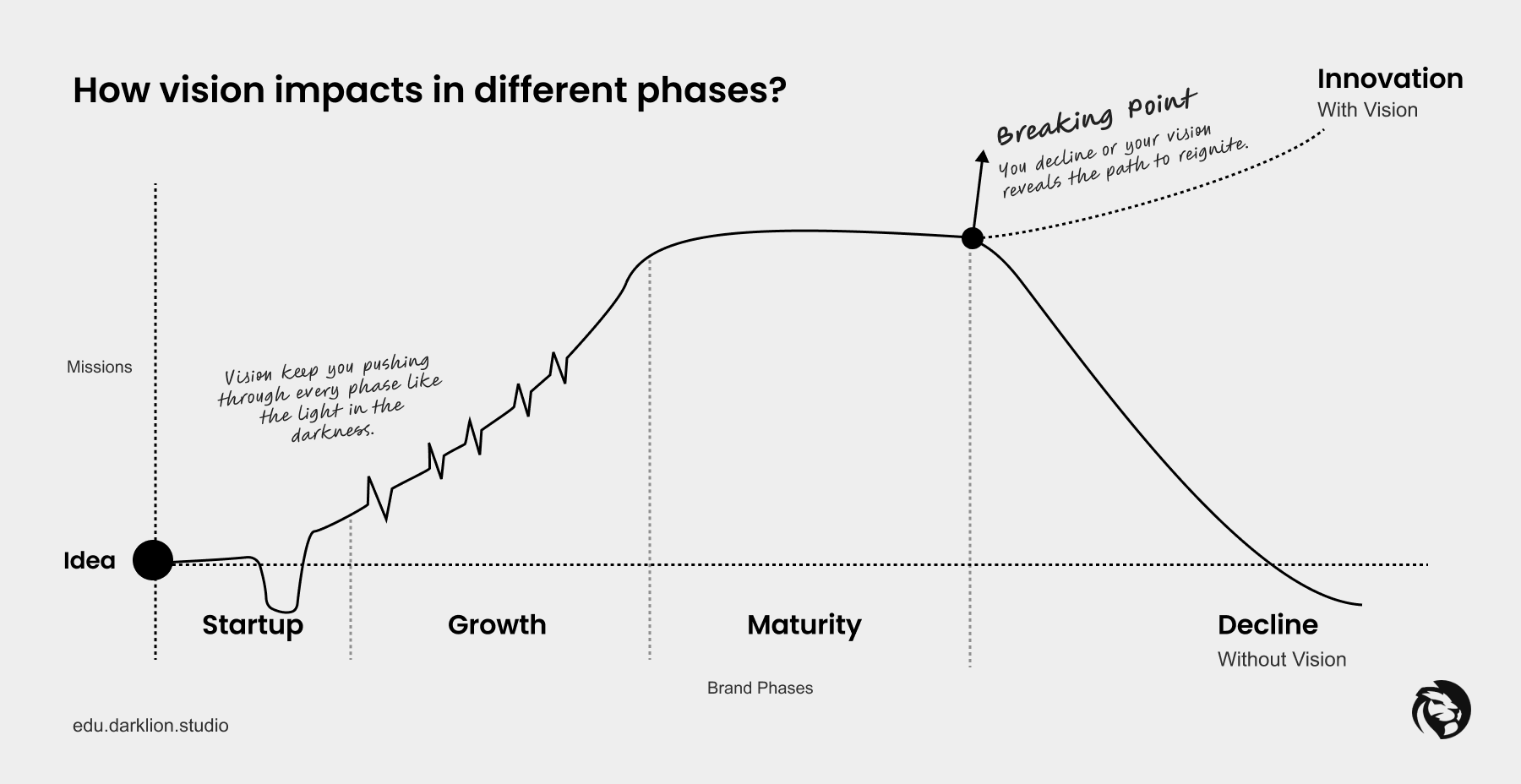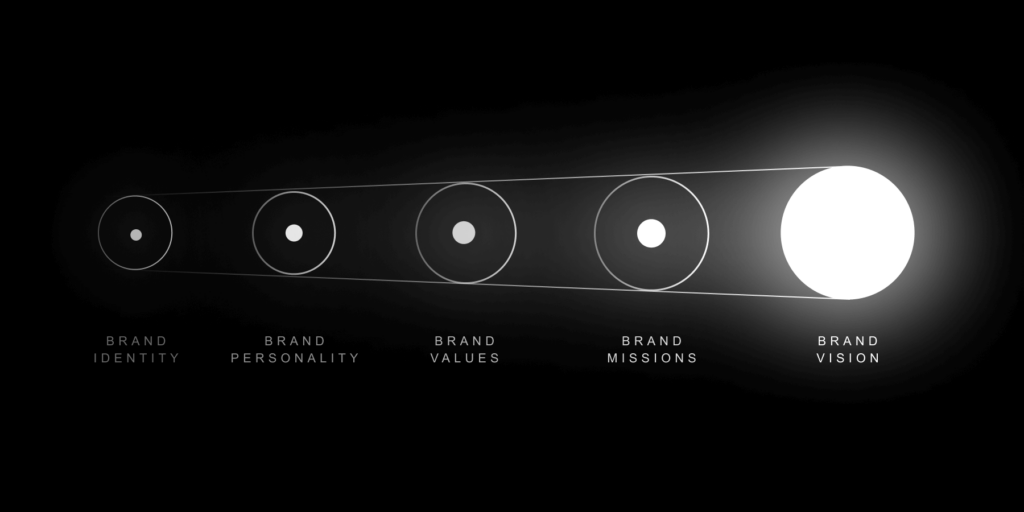Brand Vision – for those who want to leave a legacy
Brand Design, Business, Education . June 21, 2024 .4 Min Read
What is Vision?
Vision is a gut feeling of where we want to see a company in the future. It provides guidance about what core to preserve and what future to stimulate progress toward.
So, vision, in simple terms, is:

When is it necessary for a business to create a vision?
It’s advisable to develop the vision from the early stage as it becomes clearer over time. If you haven’t defined it, we would say, “It’s never too late to mend your ways.”
Let’s see how vision impacts in different phases- From Startup to Innovation

Impact of having it:
- Vision is the driving force behind any successful startup. It is the clear and compelling idea of what the startup wants to achieve, how it will create value for its customers
- Vision provides a foundation of storytelling, guides the startup’s decisions, actions, and culture, and inspires the team and the stakeholders to work towards a common goal.
Impact of not having it:
- Without a strong and coherent vision, a startup may lack direction, focus, and motivation and may struggle to attract and retain talent, customers, and investors.
- One can never be in an innovation phase without a vision
POC:
While there’s no definitive, universally accepted dataset that directly compares the success rates of startups with and without a clear vision, there are numerous studies and expert opinions that emphasize the importance of having a clear vision in increasing the likelihood of startup success.
Here is the key insights and findings from various research and expert analyses:
- From Harvard Business Review:
- “Building a Startup That Will Last”—This article discusses principles and strategies for creating sustainable startups, which often include having a clear vision.
Hemant Taneja (Venture capitalist) & Kenneth I. Chenault (Former CEO of American Express) talks about a book “Build to last” which says,
“a deep commitment to a core set of values that provided the company with a sense of purpose – an understanding of the role they played in society and how they created value for others. ”
Collins and Porras- Author
Can we consider mission in place of vision?
The mission and vision statements serve different purposes and should not be used interchangeably. Here are the key differences:
| Aspects | Vision | Mission |
|---|---|---|
| Purpose | Defines the long-term goals and the desired future state of the organization. | Describes the organization's core purpose, its reason for existence, and its primary objectives. |
| Focus | Inspirational and aspirational, outlining what the organization hopes to achieve in the future. | Practical and actionable, detailing what the organization does and for whom. |
| Time Frame | Long-term (10 years and infinite). | Short to medium-term (1-5 years). |
Aspects | Vision | Mission |
|---|---|---|
Purpose | Defines the long-term goals and the desired future state of the organization. | Describes the organization's core purpose, its reason for existence, and its primary objectives. |
| Focus | Inspirational and aspirational, outlining what the organization hopes to achieve in the future. | Practical and actionable, detailing what the organization does and for whom. |
| Time Frame | Long-term (5-10 years or more). | Short to medium-term (1-5 years). |
Examples
- Vision: “To empower businesses worldwide with innovative cloud solutions that drive efficiency, scalability, and digital transformation.”
- Mission:
- 1-3 years
- Develop Core Cloud Solutions
- Global Market Penetration
- Innovative Product Offerings
- Enhanced Security Protocols
- 4-5 years
- Scalable Infrastructure
- Global Cloud Ecosystem
- Research and Development
- 1-3 years
While they are related, the vision is about where you want to be in the future, and the missions are about what you are doing now to get there, and they can be multiple in count. If you only use one, you may miss out on the strategic clarity and motivation both can provide.
Conclusion:
However, if you need to choose one to focus on for a particular purpose, consider the context and what you want to communicate:
- If focusing on long-term inspiration and direction, Use the vision statement.
- If focusing on current operations and objectives, Use the mission statement.



